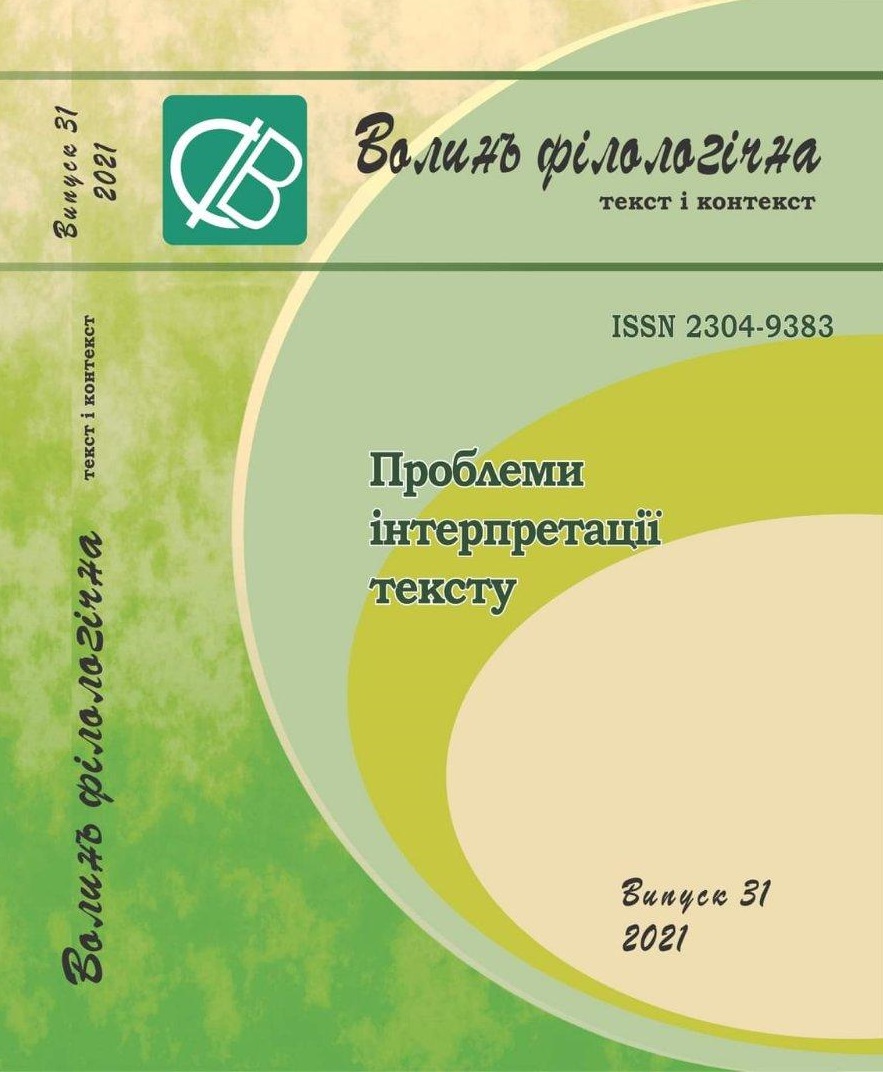The Creative Spirit of Lesya Ukrainka as Verdict for the Artist: Experience of One Poem
Keywords:
Ihor Kalynets, Stefania Shabatura, Lesya Ukrainka, poetry, sixtiers, text, interpretation, methodology, hermeneuticsAbstract
The article deals with the problem of text interpretation of
poetic work in the perspective of hermeneutic methodology on the example of the analysis of the poems
of the Ukrainian dissident-sixtier Ihor Kalynets. The advantage of hermeneutic analysis over formalist
method in the case of interpretation of works containing subtext, Aesop’s language, allegory and other
forms of conveying the plurality of meanings, which are often used by writers of enslaved literatures
to express forbidden ideas or taboo topics is observed. The main attention is paid to the reception of
the works of the famous Ukrainian artist Stefania Shabatura in the poems of I. Kalynets, the broadest
context of which is the art world, the semiosphere or in general the artistic spirit of Lesya Ukrainka.
The connection of S. Shabatura’s artistic thinking with the legacy of the Volyn writer, as well as the
reception of her personality by her friends and colleagues through the prism of kinship with a prominent
poet (in particular, based on correspondence between S. Shabatura and V. Stus during their camp
imprisonment) are traced. Thus, the concept of complex interaction of works of different generations of
Ukrainian artists, which were inspired by the existential prophetic spirit of the revival of the enslaved
nation, is constructed. Based on D. Dontsov’s work “Poetess of the Ukrainian Risorgimento” (1922),
the similarity of two historical periods is observed - the turn of the 19th – 20th centuries in tsarist Russia
and the 60s in the Soviet era as well as the creative impulses of the Ukrainian intellectuals in those
conditions. On the example of I. Kalynets’ poems about S. Shabatura, the expediency of involving broad
extra-textual contexts (historical, cultural, psychological, philosophical, etc.) for the interpretation of a
poetic text is demonstrated. The core of the article is an analysis of I. Kalynets’ poetry “My Stefa was
arrested for the second time…” from the collection “Realities” (1972) of “The Awakened Muse” period,
which contains numerous allusions, hints, and direct descriptions of the realities of Ukrainian dissident
artists’ arrests (namely the “seditious” expressionist tapestries “Cassandra” and “Lesya Ukrainka” by
Stefania Shabatura, which were the reason of her arrest). A partial comparative analysis of symbolic
images of tapestries with the symbolism of Lesya Ukrainka’s works confirms the idea that the creative
spirit of the Ukrainian poetess became decisive for S. Shabatura’s verdict. It is argued that without
taking into account numerous non-textual factors, the analyzed poem remains incomprehensible and
“obscured” for the reader’s reception and professional interpretation. And therefore in the discussion
of literary interpretive methodology such examples are an eloquent argument for the advantage of
hermeneutic approach.

